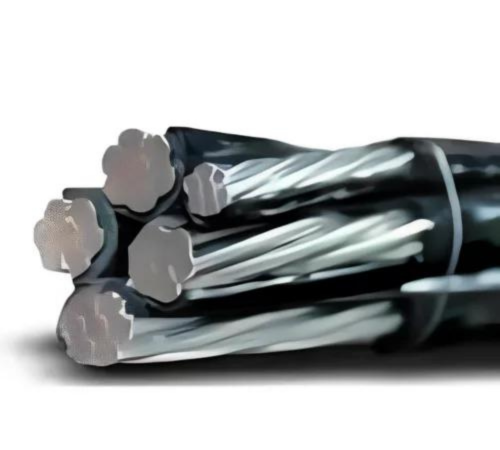Aerial Bunched Cables
Aerial Bunched Cables (ABC) are used for overhead power distribution in cities where ground space is constrained. These cables use several insulated phase conductors bundled tightly together, usually with a bare neutral conductor.
This system is ideal for rural distribution and especially attractive for installation in difficult terrains such as hilly, forest & coastal areas etc.
XLPE insulation is usually black in colour and is resistant against deterioration caused by exposure to direct sunlight, outdoor applications and UV radiations.
1 kV to 33 kV
Screened by an extruded semi conducting layer – XLPE Insulated.
Screened again by an extruded semi conducting layer and a copper tape.
Low voltage ABC are developed as they promise to be cheaper, safer, more reliable, require less tree clearing and pruning, be more aesthetic, be less labor intensive, require less maintenance and eliminate bushfires being initiated by conductor clashing.
- Relative immunity to short circuits caused by external forces (wind, fallen branches), unless they abrade the insulation.
- Can stand in close proximity to trees/buildings and will not generate sparks if touched.
- Simpler installation, as crossbars and insulators are not required.
- Significantly improved safety for linespersons, particularly when working on live conductors.
- Less required maintenance and necessary inspections of lines.
XLPE insulation is usually black in colour and is resistant against deterioration caused by exposure to direct sunlight, outdoor applications and UV radiations.
1 kV to 33 kV
Screened by an extruded semi conducting layer – XLPE Insulated.
Screened again by an extruded semi conducting layer and a copper tape.
Low voltage ABC are developed as they promise to be cheaper, safer, more reliable, require less tree clearing and pruning, be more aesthetic, be less labor intensive, require less maintenance and eliminate bushfires being initiated by conductor clashing.
- Relative immunity to short circuits caused by external forces (wind, fallen branches), unless they abrade the insulation.
- Can stand in close proximity to trees/buildings and will not generate sparks if touched.
- Simpler installation, as crossbars and insulators are not required.
- Significantly improved safety for linespersons, particularly when working on live conductors.
- Less required maintenance and necessary inspections of lines.

- Phone:+1 (859) 254-6589
- Email:info@example.com

- Phone:+1 (859) 254-6589
- Email:info@example.com

- Phone:+1 (859) 254-6589
- Email:info@example.com
